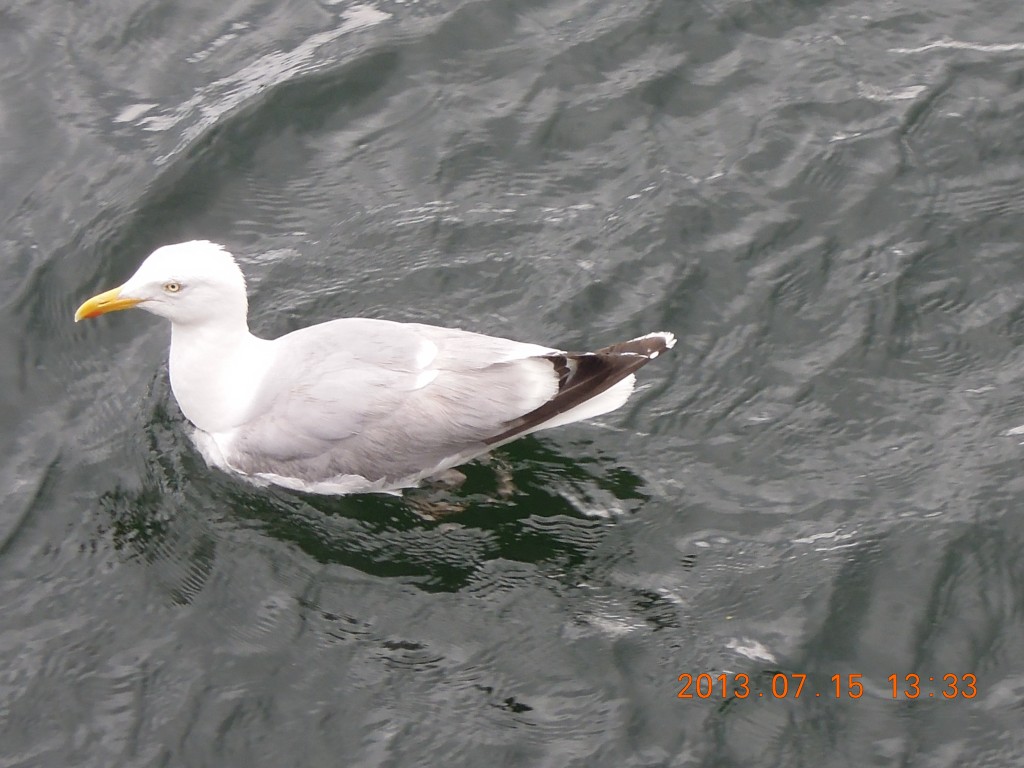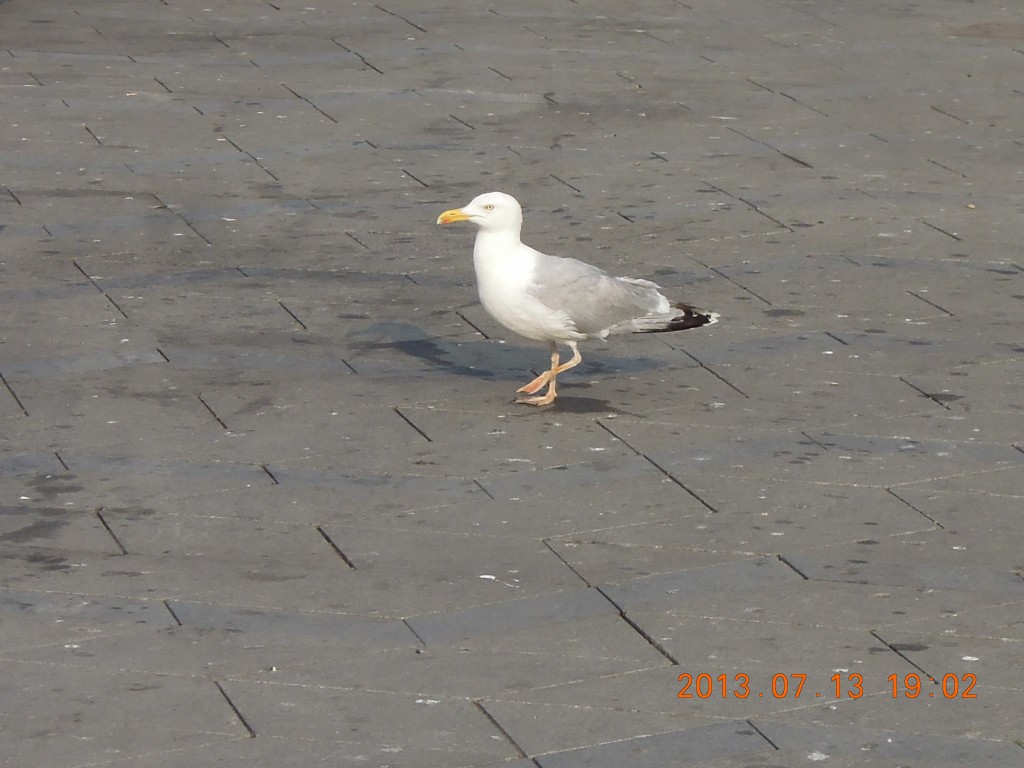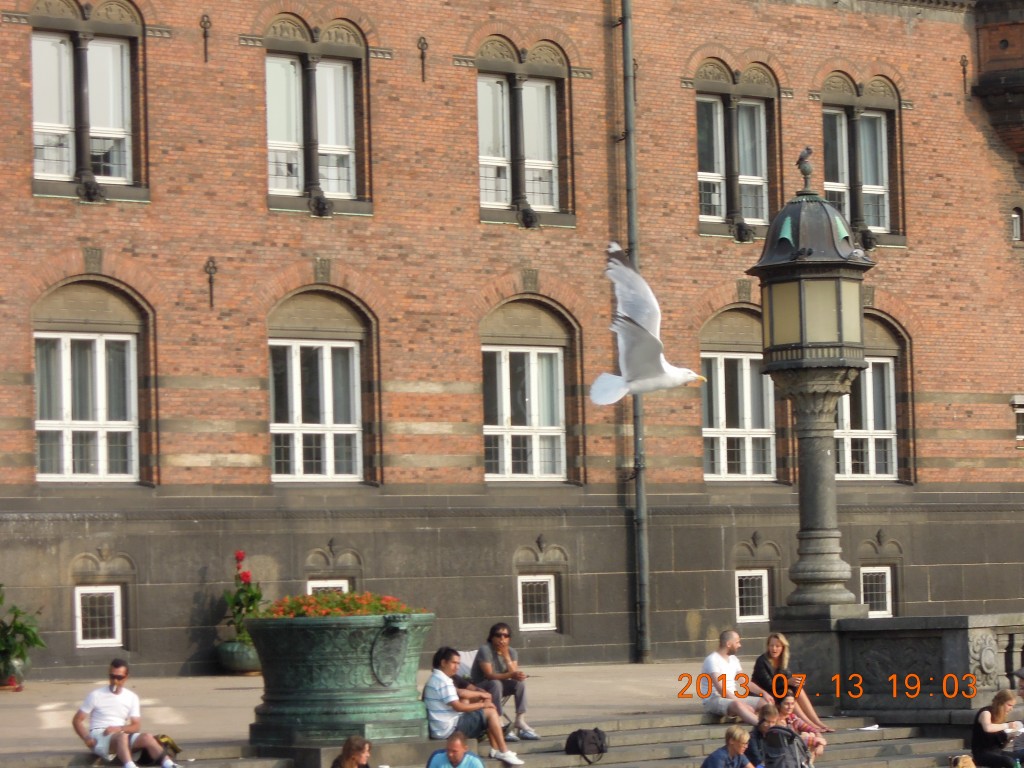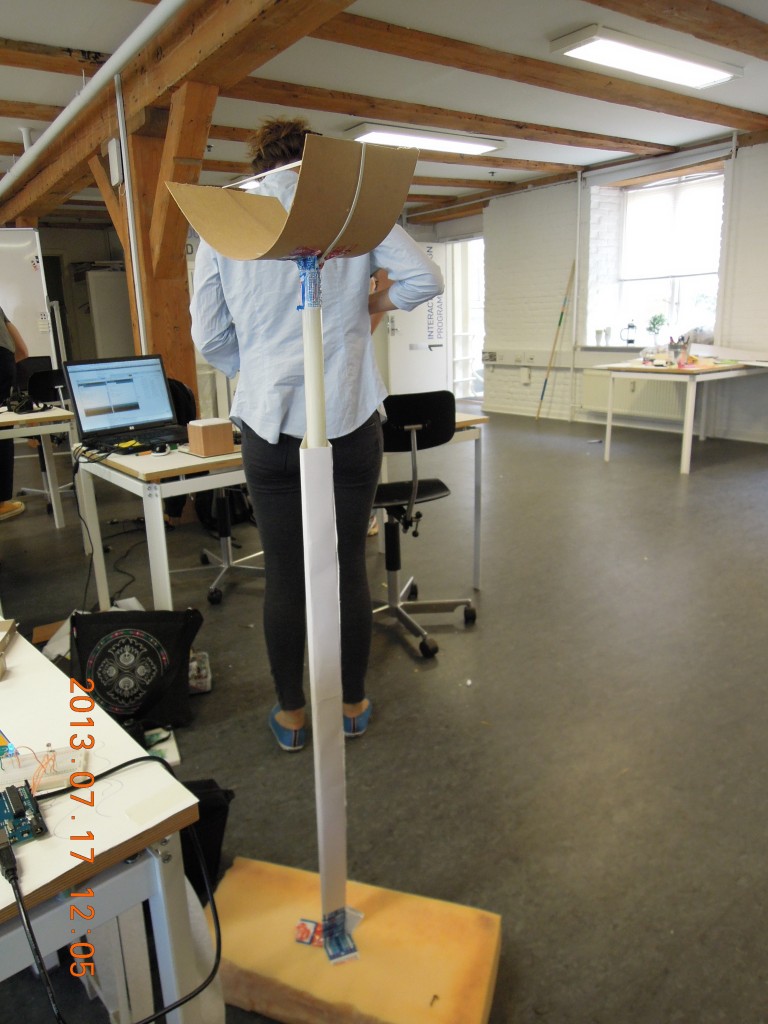The target user in my project are herring gulls (a.k.a seagulls), which are being seen everywhere in Copenhagen.
Most of the time, seagulls build their nests near the rocks or in the trees near water. But some of them may do so on rooftops of apartments, causing troubles to people living nearby.
So what is common between those trees and rocks verses rooftops? Both of them are regarded as “sheltered” locations where seagulls can keep their children safe. To provide an alternate place for seagulls to build nests would be a way out.
So here’s my design for the above situation: It mainly consists of a pole with a curved platform on the top (the rubber band is just used to fix the curvature, but the real model will not have it). Once a seagull lands on the platform and build their nests, an indicator (probably LED lamps) will be lit to tell other seagulls that this place has been occupied, and also telling pedestrians passing through that a seagull resides on it (nobody wants to be hit by droppings of seagulls, right?) A light sensor or flex sensor circuit may be used to achieve sensing of seagull nests on the platform.
These poles will be put in parks where there will be abundant ingredients for building nests, and also having a pond where seagulls can find their food (e.g. fishes, crabs). It is considerable to make them into streetlights, as it is also found that parks in Copenhagen lack illumination at night.




